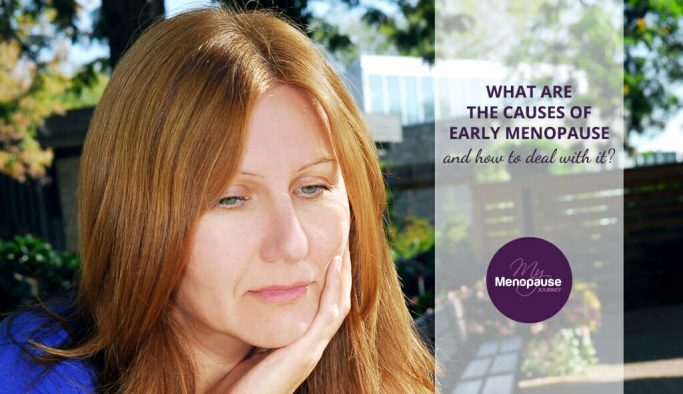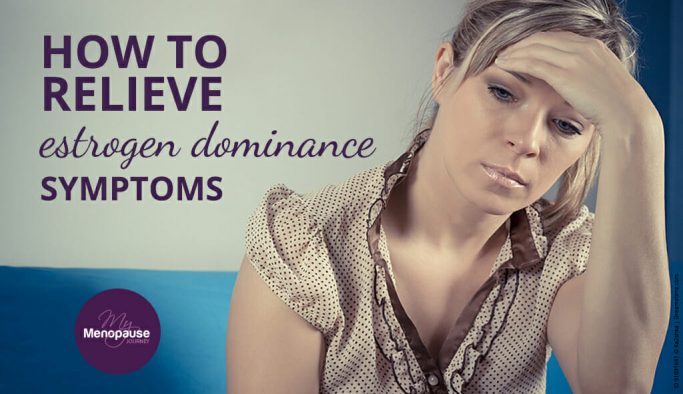I fondly remember the time my husband and I went to Romania. It was a fun, adventurous long run! We had looked forward to it for years and had made sure we trained hard. Everything was finally set, and off we went to the beautiful mountains with a wonderful group!
But then, out of nowhere, something hit me. It was like a rollercoaster inside me. I felt very unstable: Overwhelmed with sadness, irritability and anger. My mood changed very quickly! I was confused and felt like I was presenting myself very strangely to all the new people I met.
I wanted to be there, but a part of me just wanted to go home, throw myself on the sofa and hide under a big blanket. This was my first encounter with mood swings. And over the coming years, I found myself on this wild emotional ride again and again.
As I learned to listen better to my body’s needs in midlife, I started seeing what triggered my mood swings… and it is a BIG TRIGGER for most women: Stress.
During that Romania trip, I was full of stress (without realizing it). Yes, we were excited, but preparing for the big event (and juggling between chores, work and family) burned out my body!
Indeed, menopausal mood swings can sneak up on you. BUT HEY, YOU ARE NOT LOSING YOUR MIND! In midlife, our mood and emotional state are driven by our hormones — which naturally fluctuate and decline as we age.
Is there anything we can do to manage the highs and lows? DEFINITELY!
To keep your mood stable in menopause, it is best to eat a hormone-balancing diet, de-stress, get good quality sleep, do relaxing exercises, take supplements, look after your gut, boost liver function, try quick-relief tips at home and find emotional support!
But before we talk about those tips, let us first tackle the common factors behind menopausal mood swings, shall we?
My moods don’t just swing — they pivot, recoil, rebound, oscillate, fluctuate and occasionally pirouette! “wink”


How Does Hormonal Imbalance Cause Mood Swings During Menopause?
Besides diet and lifestyle factors, hormonal imbalances are the biggest drivers of mood swings during menopause. The fluctuations and natural decline in progesterone and estrogen directly affect brain chemicals that influence our mood! In turn, our stress response is heightened and our ability to regulate emotions is reduced.
Hormonal imbalances are not just a tiny glitch in our system. They could be due to many factors that turn our emotional road trip into an unpredictable one — just like what I had!
As we enter midlife, our diet, movement, sleep, stress levels and overall lifestyle play a huge role in balancing our hormones. However, we cannot dismiss the natural decline in estrogen and progesterone that comes with age!
How exactly do estrogen and progesterone affect our mood?
Well, estrogen is your key mood regulator. It has a significant impact on how your brain functions — particularly in areas that control emotions and mood.
Estrogen also influences the production and effect of your feel-good brain chemicals — including serotonin, dopamine, endorphins and noradrenaline.
But as you approach menopause, estrogen levels fluctuate before they completely decline. Every surge and dip in estrogen levels directly influences how you feel!
Progesterone, on the other hand, is known for its calming effects. It acts on GABA (gamma-aminobutyric acid) receptors in the brain.
GABA is known to reduce stress and mental overstimulation! It also promotes better sleep and feelings of relaxation. Just everything we need to keep our peace!
Just like estrogen, progesterone levels begin to wane as your body prepares for menopause. In turn, this decline reduces progesterone’s soothing effects and induces mood swings.
And that’s how estrogen and progesterone affect our mood!
The fluctuations and eventual decline slow down the production of your feel-good brain chemicals. Ultimately, this leads to a range of emotional symptoms, such as:
- Irritability
- Feeling low and demotivated
- Emotional eating
- Brain fog
- Fatigue
- Stress
- Anxiety and depression
- Panic attacks
Let’s dive into estrogen and progesterone’s effects on stress response…
If you have low estrogen and progesterone, do you know what else is affected? Your adrenal glands. They oversee your fight-or-flight hormones — including cortisol, adrenaline and norepinephrine.
Now, with low estrogen and progesterone levels, your stress hormones tend to increase easily as the two hormones interact with the hypothalamic-pituitary-adrenal or HPA axis.
Estrogen has been shown to have a protective effect on the HPA axis — helping regulate cortisol and decrease stress!
But when estrogen levels are low, this natural protection is reduced, which can lead to higher levels of stress or increased sensitivity to stressors.
Similarly, progesterone’s calming effect on the body helps regulate cortisol levels. So, with low progesterone, your body’s stress response may become more heightened.
Having low estrogen, low progesterone and high stress levels (yup, the triple trouble we would want to prevent by all means!) may also lead to other health issues in menopause.
→ They suppress the production of melatonin — a hormone that promotes good sleep quality.
→ They slow down your thyroid glands — the powerhouse of your metabolic hormones.
→ They affect your gut health — which may lead to sluggish digestion, poor nutrient absorption, tummy problems and lack of energy.
One of my favorite holistic doctors, Dr. Eric Berg, talks about estrogen, mood swings and menopause in this video [7:05]:
9 Natural Ways to Stop Having Mood Swings in Menopause!
Even though our hormones naturally fluctuate and decline (yes, that’s something that may be beyond our control) we can still make lifestyle tweaks — and take wellness into our own hands!
The foods you eat, your physical activity, sleep quality and ability to manage stress are all crucial to your emotional and mental state!
To keep your mood stable in menopause, it is vital to:
- Eat a hormone-balancing diet
- De-stress
- Get quality, uninterrupted sleep
- Do relaxing exercises
- Take supplements
- Take care of your gut
- Boost liver function
- Try quick-relief tips at home
- Be open and find emotional support
Your system needs the right fuel and support to achieve inner harmony. Give it the care it deserves and maintain hormonal balance with these nine practical tips!
1. Eat a hormone-balancing diet!
Let food be your medicine! Load up on foods that help boost and balance hormones:
- • Eat a big bowl of salad at least once a day. Fill it with different veggies and greens. Vegetables are rich in antioxidants and nutrients that help get rid of toxins — which can cause hormonal imbalance!
- • Consume more omega-3-rich fish such as salmon, sardines, tuna, herring and barramundi (Asian sea bass). Omega-3 is a healthy fat that helps build hormones.
- • Get healthy fats and antioxidants from almonds, walnuts, chia, goji berries, lentils, avocado, ghee and dark greens. They are also rich in vitamins and minerals!
- • Add adaptogenic and phytoestrogenic herbs to your diet. Adaptogenic herbs help streamline your bodily functions and promote hormonal balance. Phytoestrogenic herbs contain plant-based estrogens that can give you a natural boost. As we have discussed earlier, having optimal levels of estrogen means more happy hormones and less stress hormones!
- • Give yourself a treat with a small piece of dark chocolate. It is rich in flavonoids, which help release happy hormones. This guilt-free treat will satisfy and make you happier!
- • Cut down on stimulants. Having a few cups of coffee or a glass of wine now and then is okay. But these drinks have to be consumed in moderation. They directly affect the chemical messengers in your body that influence how you feel — and can trigger mood swings.
2. STRESS LESS, BREATHE MORE!
We often hear “find ways to manage stress” or “slow down and take a break”, but why do we really need to?
As you already know, stress causes a range of emotional responses — including anxiety, irritability and depression. It also affects your ability to focus and make sound decisions, which can further exacerbate negative emotions.
Additionally, stress leads to various physical symptoms and increases your risk of many diseases. In fact, stress is known to be a sneaky culprit behind many modern diseases we have today!
Thus, it is truly important to listen to your body and be attentive to its signals.
What I usually do when facing a stressful situation is deep breathing [Good Breathing Technique to Lose Weight and Reduce Stress! (mymenopausejourney.com)]. This one’s a real stressbuster that you can do anytime, anywhere!
Other things you can do for stress relief:
• Meditate, go for a massage or take a walk in nature!
• Try journaling to keep track of your emotions and triggers.
• Try acupuncture and acupressure. Hitting your “energy spots” releases tension in the body and makes you feel better!
As much as possible, fill your mind with positive thoughts. And yes, this may be easier said than done when some days, things just don’t go your way. Still, try to give yourself positive affirmations — your brain will accept what you say. Believe it or not, the power of spoken words can change your mood dramatically!
3. GET QUALITY, UNINTERRUPTED SLEEP!
Who doesn’t get crabby when they don’t get enough sleep? Because I totally do!
Not to mention that achieving good sleep quality in midlife may become more challenging because of night sweats. If you haven’t already, check out my article Sweating While Sleeping? 11 Ways to Stop Waking Up Soaked in Sweat! on how to manage night sweats!
Sleep helps regulate the hormones linked to our mood and circadian rhythm (natural body clock). This explains why our internal balance (and precious sense of peace) gets thrown off when we lack sleep!
And when you’re feeling tired and restless, it becomes harder to handle stress and deal with tough situations. In turn, your mood may get more unpredictable the next day.
So, it’s really important to make sleep a priority if you want to feel your best! Head over to my article 16 Natural Solutions for Sleep Deprivation During Menopause covering the best tips to enhance your sleep quality in midlife!
4. DO MORE RELAXING EXERCISES!
I love the outdoors! I do walks and trails in nature, which work wonders for my mood. The sunshine and fresh air just make you feel better!
When you are stressed, it is best to do more relaxing mind-body exercises — like yoga, Qigong, Pilates and Tai Chi. These exercises calm your central nervous system and may help you manage mood swings!
Adrienne has a great yoga routine to relieve mood swings. Try it! [23:44]:
If you’re the type who is used to working out regularly, you can do strength training and high-intensity interval training (HIIT). These two are especially good for many aspects of midlife health!
Sweating removes toxins and burns calories. It also improves blood circulation and strengthens your muscles and bones. A 30-minute exercise daily can go a long way!
5. Supplement!
Eating a nutrient-dense diet is unrivaled at providing us with vitamins and minerals. But if, for some reason, you have to step up the nourishing game, support your body with natural supplements!
The following are known to promote feelings of relaxation, reduce stress and boost hormonal balance:
• Magnolia bark, valerian root, ashwagandha, lavender tea and green tea can naturally boost GABA levels!
• 5-Hydroxytryptophan (5-HTP) is another excellent supplement for mood swings. It’s a precursor to your happy hormone, serotonin. (Check out the FACT BOX to know how GABA and 5-HTP help with mood swings!)
• Consider using natural progesterone! As you have learned, progesterone is your body’s calming hormone. Natural progesterone supplements are taken orally and are absorbed into the body through digestion. Other common forms of natural progesterone are creams, patches, gels, sprays and suppositories.
• Magnesium, the “chill pill”, relaxes your nerves and helps build your feel-good hormones. This is why low magnesium usually leads to mood swings, emotional eating, anxiety and depression!
• Amino acids are the building blocks of hormones. Taurine and theanine are especially helpful in boosting your happy hormones! I have started taking essential amino acids (as the body can’t produce them naturally) and they have improved my health — BIG TIME!
• B-complex, vitamin C, vitamin D and vitamin E support the function of your hormone-producing glands!
NOTE: The effectiveness of every supplement may vary, so it’s always best to discuss it with your healthcare provider. This is to ensure that the supplement is safe and truly beneficial for your needs!
6. Take care of your gut!
The gut and brain help each other to regulate your mood. They constantly communicate through a “shared path” known as the “gut-brain axis”!
Also, 95% of serotonin comes from your gut, so you better keep this “serotonin powerhouse” in tiptop condition!
To optimize your gut health:
• Eat more fermented foods such as kombucha, sauerkraut and kimchi. They are rich in probiotics that promote healthy digestion and gut balance! But go slow when adding these foods to your diet. Allow your gut to adjust and warmly welcome these probiotics!
• Support the absorption of probiotics by eating more prebiotics — including artichokes, dandelion greens, garlic and asparagus.
• Avoid gluten and sugary foods as they can trigger gut inflammation that slow down digestion. These foods also cause food sensitivities and intolerances — which can lead to a range of tummy problems and other symptoms!
• Be careful with dairy. Dairy products are known to trigger tummy problems for those who are sensitive to lactose (a type of sugar found in milk). Most dairy today also contains high levels of bad fats, artificial hormones and antibiotics! Not all dairy products are created equal, though. I do eat Greek yogurt (as it is a good protein source) without having any gut issues. It all boils down to knowing what your gut can and cannot tolerate!
Want to learn more tips and remedies to prevent gut issues? I’ve got great recommendations here → Heal the Gut – Natural Remedies for IBS that Work!
7. Boost liver function!
The liver is widely known for its fantastic job at filtering toxins. But this tireless organ also plays a crucial role in hormonal balance! Yes, the liver helps metabolize your hormones — especially estrogen and progesterone.
Other functions of the liver are:
→ Producing bile to aid in digestion
→ Storing essential vitamins and minerals.
→ Helping maintain healthy cholesterol levels
→ Supporting your natural immunity
Boost your liver function by eating more broccoli, carrots, spinach and pumpkin. Cauliflower, Brussels sprouts and sweet potatoes are also great! They are rich in antioxidants that support better detoxification.
Besides eating liver-healthy foods, fasting is another great thing you can do! When you fast, your body starts to burn stored fat for fuel — instead of burning glucose (from the food you eat). This fat-burning mode allows the fat cells in your liver to release and filter stored toxins!
Additionally, fasting helps reduce fat buildup and may be beneficial in preventing liver disease.
8. TRY QUICK-RELIEF REMEDIES AT HOME!
- Who doesn’t love a quick remedy that you can do in the comfort of your home?
- Have small rollers of essential oils ready inside your purse! Lavender, peppermint, chamomile and frankincense are the best essential oils for mood swings.
- Decompress by placing a warm pack around your neck and shoulders. Warm packs can relieve pain or stiffness by increasing blood flow and relaxing the muscles!
- Use a foam roller or tennis ball to massage your body, and then stretch. This is good for relieving tension and releasing some stress!
- Tune in to relaxing music. It is a great way to ease mood swings! Create a playlist and listen to soothing songs! This can include genres, like classical, jazz and ambient music. Instrumental music, especially the piano or violin, is also known to induce feelings of relaxation!
9. BE OPEN AND FIND EMOTIONAL SUPPORT!
Having someone (or something) that keeps you grounded is EVERYTHING at this phase of life. You can find support from your friends, family, colleagues or community group!
If you have a partner, the most immediate emotional support usually (and should ideally) comes from him. But the thing is, many women who deal with midlife symptoms feel like they are often misunderstood. This can take a toll on relationships and marriages!
Whether mood swings are causing you conflicts or not, you will never go wrong with letting your partner understand the whole picture.
Remember, women’s hormones constantly change… and I mean, CONSTANTLY.
We have a 28-day cycle — from puberty until perimenopause. Within each cycle, our estrogen and progesterone levels fluctuate, leading to physical and emotional changes. Some days, we feel more confident, outgoing and have an increased desire for intimacy. Other days, we feel more tired and irritable.
Imagine that? All these emotions, month after month — for about 30 years?
On the other hand, men’s testosterone levels remain relatively stable throughout their lives. So, they have more consistent patterns in their behavior and mood. Although men may experience mood swings due to external factors (like stress and significant life events), their hormonal changes are not as drastic as women’s.
You might think this is just a random fact about hormones, but you will be surprised that not many people are aware of this! Acknowledging gender gaps can save you from a lot of conflicts and arguments. It also opens the door for you and your partner to agree on how you can support each other’s needs!
Discover more tips on managing mood swings from Eileen of A. Vogel [5:19]:
Experiencing mood swings is not about your lack of willpower or control over yourself. It is mainly due to your hormones. If symptoms are severe or unmanageable, talk to your healthcare practitioner and take menopause tests to check your hormone levels!
How are you holding up with mood swings? We love to hear from you, please leave a comment below.
References:
ncbi.nlm.nih.gov/pmc/articles/PMC3197240/
ncbi.nlm.nih.gov/pmc/articles/PMC3828542/
ncbi.nlm.nih.gov/pmc/articles/PMC2440795/
sciencedaily.com/releases/2007/12/071212201208.htm
sciencedaily.com/releases/2007/11/071130154059.htm
The role of the hypothalamic-pituitary-adrenal axis in depression across the female reproductive lifecycle: current knowledge and future directions – PMC (nih.gov)
Frontiers | The Hypothalamic-Pituitary-Adrenal Axis: Development, Programming Actions of Hormones, and Maternal-Fetal Interactions (frontiersin.org)
The role of estradiol in adrenal insufficiency and its interaction with corticosterone on hydromineral balance – ScienceDirect
Progesterone Deficiency and Adrenal Fatigue – Marcelle Pick, OB/GYN NP
Hormonal and Metabolic Changes of Aging and the Influence of Lifestyle Modifications – PMC (nih.gov)
ncbi.nlm.nih.gov › books › NBK513311
ncbi.nlm.nih.gov › articles › PMC7796270
The Impact of Intermittent Fasting on Non-Alcoholic Fatty Liver Disease in Older Adults: A Review of Clinicaltrials.gov Registry – PMC (nih.gov)
👉 What to Do Next
Don’t go just yet — especially if you’ve been feeling off and no one’s given you real answers.
Go to the START HERE page.
It’s where things begin to feel clearer. No more second-guessing, no more sorting through conflicting advice. Just calm, honest support for where you are right now.
And if you haven’t yet, download the FREE GUIDE.
It’s quick, clear, and made to help you feel better — without having to turn your whole life upside down.


Gita is the founder of My Menopause Journey. Since 2014, she has been supporting midlife women by sharing hard-earned learnings from her own experience. To advance her knowledge, Gita puts a lot of her time and effort into understanding the broad spectrum of women’s health. She immerses in extensive research about the physical, mental and emotional aspects of menopause. Gita believes in the life-changing power of healthy, holistic living — this is where she anchors her message to all women. Learn more about her marvelous mission in About us - My Menopause Journey.






